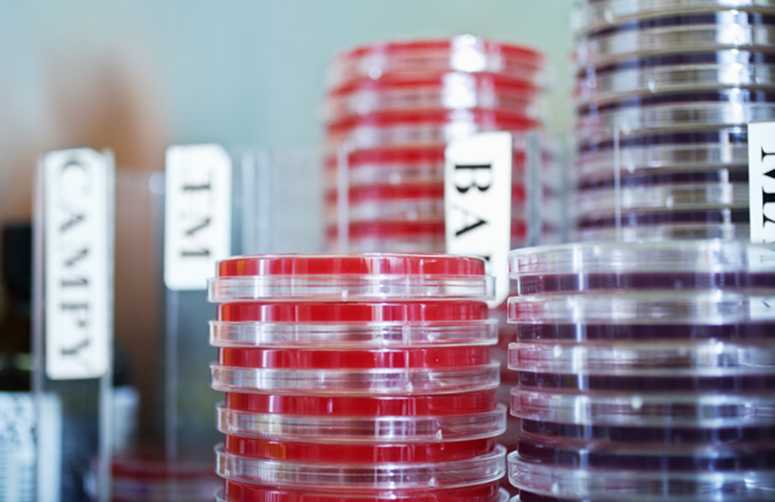Foodborne Illness and Culture-Independent Diagnostic Tests (CIDTs)

Incidence and Trends of Infection with Pathogens Transmitted Commonly Through Food and the Effect of Increasing Use of Culture-Independent Diagnostic Tests on Surveillance—Foodborne Diseases Active Surveillance Network, 10 U.S. Sites, 2013–2016
Recent CDC reports look at the use of culture-independent diagnostic tests (CIDTs), an increasingly commonly used method for diagnosing intestinal bacterial infections transmitted commonly by food. CIDTs work by detecting the presence of a specific antigen or genetic sequence of an organism. CIDTs do not require isolation and identification of living organisms. Consequently, these tests can be conducted more rapidly and yield results far sooner than can be reached through traditional culturing methods. However, CIDTs do not provide the information needed to characterize the organisms that cause infections—information that is needed to identify antibiotic resistance, find outbreaks and monitor disease trends.
Questions and answers
What do these reports add to our understanding about culture-independent diagnostic tests (CIDTs)?
The Foodborne Diseases Active Surveillance Network (FoodNet) surveillance indicates the use of CIDTs is on the rise, based on increased reports of positive cases and more labs making CIDTs available. CIDTs are most often used to detect Campylobacter and Shiga toxin-producing Escherichia coli (STEC) infections. Use is increasing rapidly for other enteric pathogens, such as Salmonella, Shigella, Vibrio, and Yersinia. Laboratories are not confirming positive CIDT results through culture for many pathogens, a step called reflex culture.
What are the pros and cons of CIDTs for the diagnosis of foodborne infections?
Pros
CIDTs are faster and easier to use than the traditional method (culture) for detecting bacteria. (Culturing is a method that helps an organism multiply so that scientists can isolate it and then do tests on it, such as determining if it is resistant to antibiotics.)
Cons
CIDTs do not provide an isolate, which contains the organism that caused the illness. Isolates are vital to answering important questions, such as: Is the organism a particularly virulent strain? Is it likely to respond to antibiotics? Has it recently been found in others who are sick, suggesting an outbreak?
How are CIDTs changing public health surveillance of foodborne infections?
Because CIDTs do not provide an isolate, we can’t perform tests that determine an organism’s DNA fingerprint, strain or subtype, antimicrobial resistance pattern, or other attributes, meaning doctors can’t tailor patient therapy and we can’t make informed public health decisions.
When links among cases of illness cannot be made quickly, the investigation of the source of the infections is delayed. Contaminated products may remain on shelves and in pantries, outbreaks may go unsolved, more people may become sick, and valuable opportunities for improving the safety of our food may be lost.
Therefore, it is critical that the public and private sectors collaborate to find ways to obtain isolates when a CIDT yields a positive result.
Additionally, although CIDTs can provide timely information for clinical management of foodborne infections and are easier for laboratories to do, increasing use of CIDTs affects interpretation of public health surveillance data and our ability to monitor progress toward achieving prevention goals. It is difficult to interpret whether these are true changes in incidence or whether the change is in part or completely due to changes in diagnostic testing practices and procedures.
Learn more about the impact of CIDTs on public health surveillance >
How is CDC responding?
CDC is encouraging laboratories to perform reflex culturing (culturing specimens with positive CIDT results for intestinal bacteria); working with companies that make CIDTs so specimens will be collected in a way that keeps the organisms alive for culturing; developing new CIDTs that can supply information about subtype, antibiotic resistance, and virulence; and adapting surveillance systems to meet the public health challenges of this new era.
FoodNet : Since 2010, FoodNet has surveyed clinical laboratories about adopting new testing methods to detect intestinal pathogens in stool samples. FoodNet now collects epidemiological and pertinent laboratory data on both culture-confirmed and positive CIDT reports of Campylobacter, Listeria, Salmonella, Shigella, STEC, Vibrio, and Yersinia infections, and FoodNet will continue this work as more CIDTs are developed. FoodNet also is collecting information on the number of CIDTs performed, to better understand how test use affects trends in surveillance of these infections.
PulseNet: PulseNet’s strategy to meet the challenge of culture-independent testing includes asking clinical labs to send cultures or patient specimens to public health labs so outbreaks can be identified; developing DNA fingerprinting techniques that do not depend on having an isolate, conducting whole genome sequencing on isolates, and working on targeted metagenomics.
What's next as we transition to CIDTs?
To maintain public health surveillance of foodborne and other bacterial enteric diseases and to preserve the quality of clinical decision making, it will be necessary to:
- Enhance surveillance methods to capture information on the type and brand of CIDTs that clinical labs are using, so investigators can examine the lab results critically
- Examine the criteria for diagnosing a case of enteric infection (called a case definition) to inform evidence-based best practices and clinical guidelines
- Encourage and implement reflex culturing at clinical laboratories or submission of culture-ready specimens to public health laboratories
- Develop culture-independent methods to identify characteristics of disease-causing bacteria, such as serotype, antimicrobial resistance, and virulence.
- Page last reviewed: May 14, 2015
- Page last updated: April 20, 2017
- Content source:


 ShareCompartir
ShareCompartir